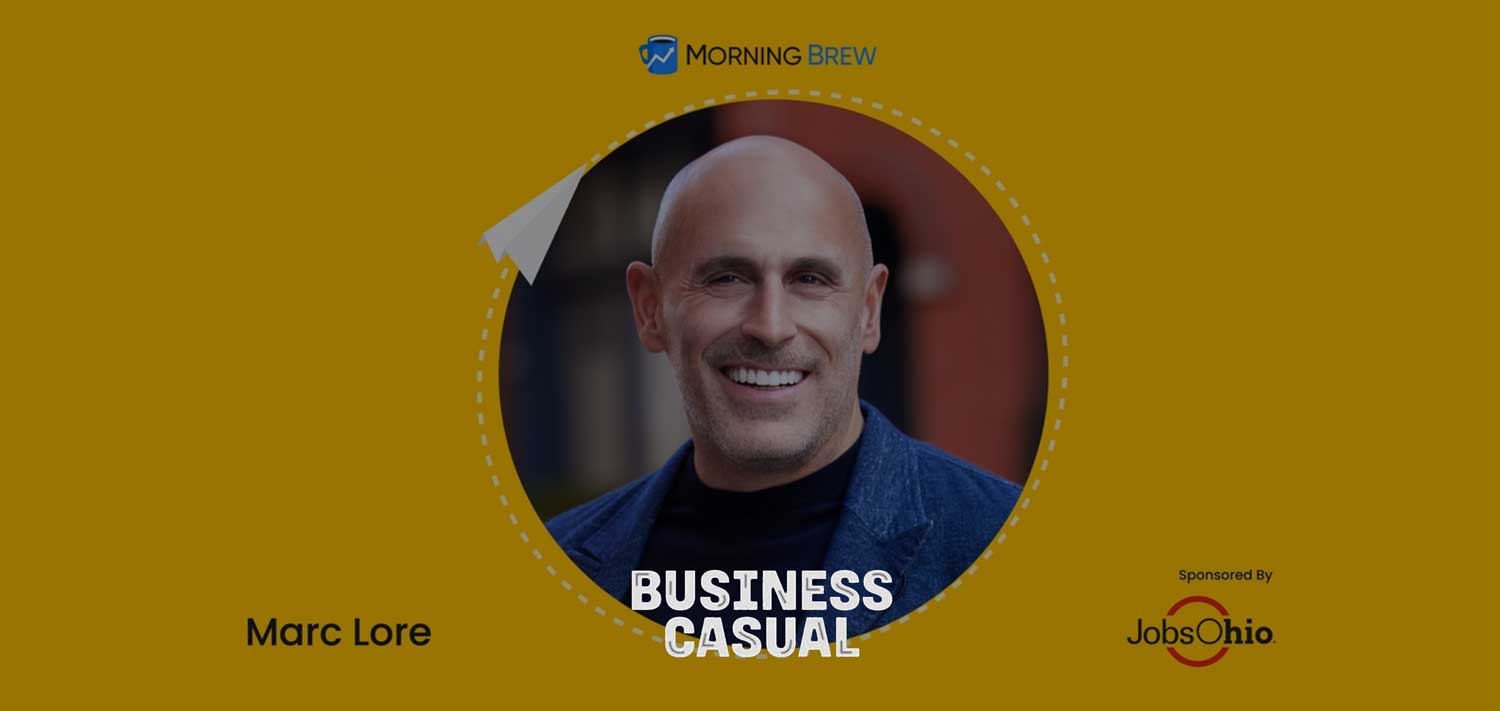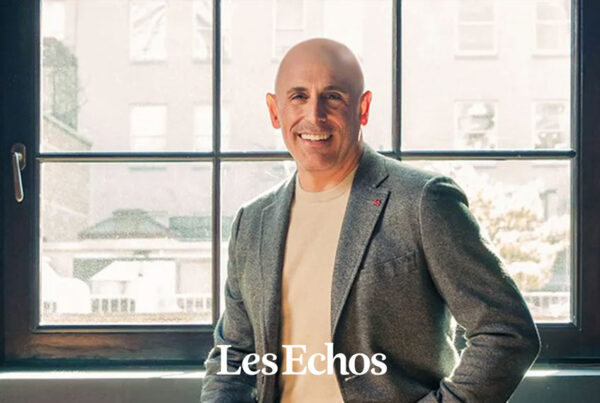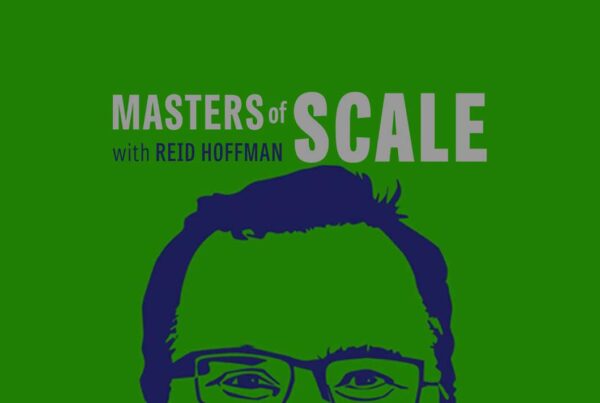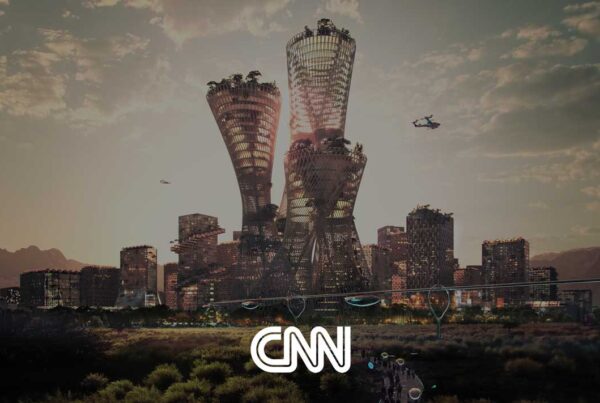Serial entrepreneur, investor and NBA owner Marc Lore chats with Nora and Scott about his dream of building a sustainable city in the desert, plus, basketball and his big plans for the Minnesota Timberwolves and Lynx.
The complete transcript of this episode is available below.
Nora Ali: From Morning Brew, this is Business Casual, the podcast that gives you a front row seat to candid conversations with some of the biggest names in business, asking them the questions you wish you could ask. I’m your host, Nora Ali.
Scott Rogowksy: And I’m your other host Scott Rogowsky. But I am going as Nora for Halloween. We are here for your ears, bringing you stories of how business shapes our daily lives now and into the future. Now let’s get down to business. Mwahaha. That’s for Halloween.
Nora Ali: Given our current reality, the idea of building a utopian city or a city from scratch feels equal parts appealing and impossible. And today we’re talking to someone who believes he might just be able to pull it off. This fall, serial entrepreneur and investor Marc Lore announced his plans to build a new city called Telosa in the United States. The city, which is estimated to house 50,000 residents by the year 2030 in its first phase of development, will be designed with sustainability at its core, with a ban on fossil fuel powered vehicles and the promise of a 15 minute commute to offices, schools, and amenities. But at its core, Telosa is not just a city.
It’s a test of a new model for society called equitism, which Marc says will create the most open, fair, and inclusive city in the world.
Scott Rogowksy: Big goals here, big ideas, Nora, which is what I love to discuss on the show.
Nora Ali: Some of the biggest ideas I think I’ve ever seen in my life. And I do want to mention Scott that I’ve known Marc for many years. I was an early employee at Jet.com, the e-commerce company that he founded that went on to get acquired by Walmart for $3.3 billion. And I’m also kind of behind the scenes a little bit on the city of the future on Telosa, where I pop my head in here and there to advise on things around diversity and inclusion, communications, technology. So it’s been really fun to see how Marc and his team are approaching the early stages of this supercolossal project.
Scott Rogowksy: So you’re part of this team here and you worked at Jet? I just want to ask you about this. Maybe you know a little bit about it because you work there because I was researching. Marc has this uncanny ability to found these companies that are generating revenue, but not earning profits, but then he sells these companies for hundreds of millions, if not billions of dollars. Like Jet.com, it sounds like Walmart bought Marc and maybe his ideas for the logistics and the shipping, right? I mean, because the site itself, was it successful in your opinion?
Nora Ali: There’s a lot of hypotheses around this very point, Scott. And Marc, after Walmart acquired Jet.com, became the CEO of Walmart e-commerce in the U.S. and Walmart e-com basically exploded from that point forward. So it wasn’t just Marc. It was also all the folks who worked at Jet who then worked on Walmart products as well. So that’s a very good question you bring up and a question that I’ve gotten a lot, having both worked at Jet and covered companies like Walmart and Jet as a news anchor. So yeah, it certainly helps to boost Walmart’s e-comm biz.
Scott Rogowksy: Yeah. And even the Diapers.com story with Marc is fascinating, how Amazon basically shook him down and said, if you don’t sell to us, we’re going to put you out of business. I mean, look, this is capitalism at its, you could say finest or worst, depending on your opinion of it. But Marc has some ideas about capitalism. And even though he’s clearly benefited from it, he definitely believes that there are some inequalities and unfairness in the system. So I guess that inspired him to build out Telosa in the first place, which is not Tulsa or Tesla, but it is very similar sounding.
Nora Ali: This is his big moonshot is Telosa. And on top of that, Marc has teamed up with Alex Rodriguez, baseball legend, to become owners of the Minnesota Timberwolves and the Minnesota Lynx, which I know you’re excited about. So we’re very excited for this convo about making Telosa a reality, about Mark’s approach to innovating with the NBA and maybe even, Scott, to geek out about baseball cards with you.
Scott Rogowksy: That is my primary objective here. I got to show off my collection. I want to hear about his collection ’cause Marc and I go way back in the baseball card biz.
Nora Ali: Oh way back. Here’s our convo with Marc Lore.
[MUSIC BREAK]Nora Ali: So, Marc, you and I have known each other for six years now, which is incredible to think about, work together in many capacities. The last time I interviewed you was in 2018. I was at Cheddar. You are still the CEO of Walmart e-commerce and now you’re building a city, how they grow up so fast. Marc. So I do want to start by dispelling, maybe a little bit of a misconception around Telosa, around the city you’re building. I think a lot of people might look at the city of the future as just a place to implement new tech, new types of housing, buildings, mobility, recreation.But you have said before that the city itself is just a method or a tactic to test out your hypothesis for a new model for society. So let’s start at day zero. Bring us to the beginning of when you had that idea to test this new model.
Marc Lore: Yeah, sure. I think it was just over the last probably five years was when the seed got into my head. And I think, you know, like so many Americans over the last five years have just been frustrated by why, despite all the material progress we’ve had as a country, there’s still so many people just barely getting by and how that’s created greater gaps in wealth and income in this country. And you know, the country has just become so polarized around this topic. And it just got me thinking, did we get capitalism right? Like so many great things about capitalism, but do we get it right? Is it like, is it a hundred percent? Is it an A plus or is there more room to grow and imagine possibilities that would make it even stronger as an economic model. And I started doing research and I came across this book. This is the aha moment. Henry George wrote a book called Progress and Poverty back in the late 19th century. I didn’t realize it at the time, but apparently it was the second-most read book next to the Bible during its time. And he made a very compelling case as an economist that the real problem with capitalism is land ownership. And I started thinking about it and thinking, you know, capitalism doesn’t work when there’s monopolies. Like we had monopolies earlier in American history and it was just absolutely dismal for workers. And so we do a good job I think of preventing monopolies from happening and creating a competitive environment. But when it comes to land ownership, that’s the silent monopoly. You’re a land owner. You essentially have a monopoly on that land. There’s no, antitrust breaking that up. And furthermore, if you think about how land was divvied up in the country many years ago, it was sort of like right place, right time, hey, I’m claiming these hundred and 60 acres as my own, but put that aside, it was just plain unfair that you could own a piece of land and then communities and people would come there and give the land value by living there and creating homes there, having families there and tax dollars that were spent on building infrastructure to make the city, town better. But also who’s benefiting? The land owner because the land’s appreciating in value. And so I thought, well, what if the land, you know, when it was worthless was actually owned by the community to start. Okay, well, if in the desert, there’s lots of places in the U.S. but in the desert in Nevada, for example, the land is very cheap, a couple of thousand dollars an acre. And I thought, what if you bought enough acreage to create a city of 5 million people, call it 200,000 acres. And so maybe it’s four or $500 million. And when we did the math, we said, if we can get 5 million people to move to the desert and create the city that the land would be worth roughly a trillion dollars, and then the foundation could sell the land, create a trillion dollars worth of value, create an endowment diversified into lots of asset classes and earn $50 billion a year, like similar to like a university endowment or a hospital endowment or something like that. And that $50 billion a year would be a substantial sum of money giving back to the citizens of the community in the form of advanced social services, health care, education, jobs, training, affordable housing. And if people trusted the community foundation to do good, maybe people would donate to the community foundation. You would never donate to a city now because that’s taxes, nobody trusts it. And it would be a virtuous cycle where eventually the community foundation we’d be so wealthy that it would be able to do an incredible amount of good and increase the collective happiness and wellbeing of the citizens. Way beyond what we could even imagine today. And then potentially wouldn’t even need as high taxes. So we’re not talking about some sort of weird socialist communist model of any sort. It’s capitalism, but it’s just returning that value creation back to the citizens. And had we done that in the beginning, I think we’d be in a completely different place now. And so anyway, this is the theory. And in order to test it, I mean, I’d love to be able to test it without building a city of 5 million people with $500 billion or whatever. But unfortunately the only way to really test it is with a clean slate and to do it. But then as we started thinking about, well we’re building this city from scratch, there are incredible innovation that’s happened around technology that enables us to do things that we can’t currently do in existing cities, around sustainability, preparing for climate change and autonomous vehicles, these, all these different things that we can do. So why not do them all at the same time? And so our mission now is to create a more equitable and sustainable future, because we do believe there’s going to be so much to learn from doing this project that we’re basically innovating and pushing the envelope on all areas that pertain to building the city at the same time that we’re testing this model. So it’s sort of the combination of both. That’s got me really fired up.




